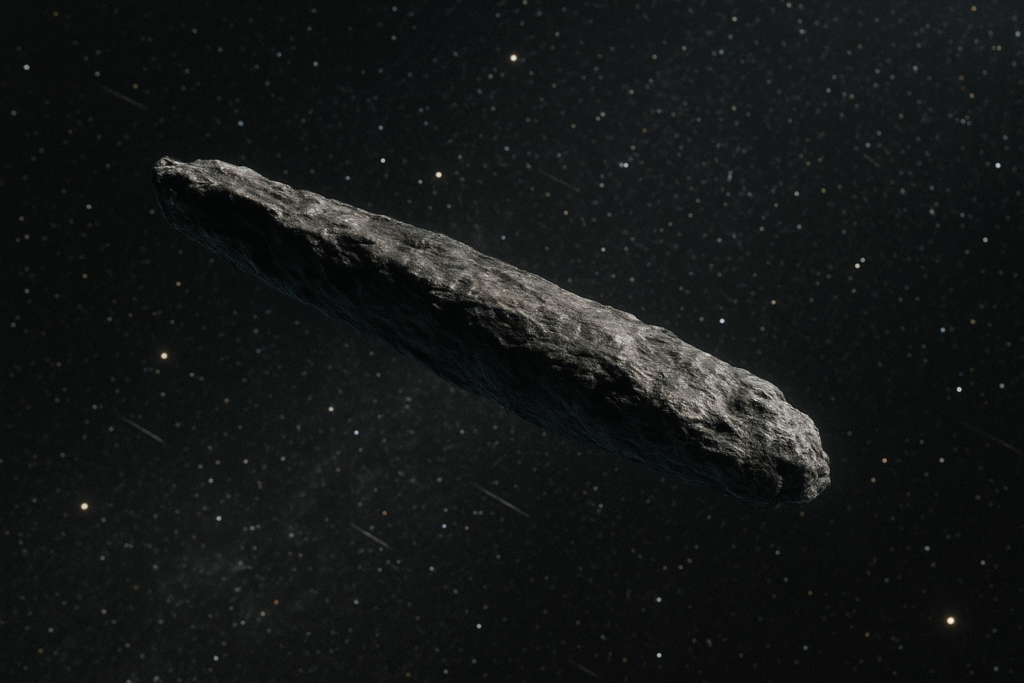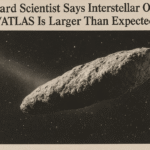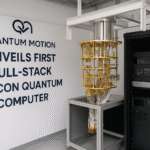By Harshit | 30, September 2025 | Cambridge, USA | 09:30 EDT
A mysterious interstellar object currently passing through the solar system may be far larger than first believed — and could even represent alien technology, according to Harvard astrophysicist Avi Loeb and his colleagues.
The object, designated 3I/ATLAS, was first detected by NASA on July 1, 2025. It is only the third confirmed interstellar visitor to our solar system, following 1I/‘Oumuamua in 2017 and 2I/Borisov in 2019. Early telescope data classified 3I/ATLAS as a comet. But new calculations suggest its sheer scale and unusual motion defy easy explanation.
A Giant Among Interstellar Visitors
In a recent analysis, Loeb’s team estimated that the mass of 3I/ATLAS may exceed 33 billion tons, a figure that dwarfs previous projections. By studying its trajectory, they determined the object’s “non-gravitational acceleration” — a slight deviation from the path dictated purely by gravity — was less than 49 feet per day squared.
By comparing this with the amount of dust and gas it appears to be shedding, the researchers concluded that the nucleus of 3I/ATLAS could measure more than 3.1 miles across. That makes it vastly larger than ‘Oumuamua, which was only a few hundred meters long.
“This is like finding a needle in an intergalactic haystack,” Loeb said, emphasizing how improbable the discovery was. “Given the limited reservoir of heavy elements, we should have seen hundreds of thousands of smaller interstellar objects before one of this scale.”
A Close Encounter with the Planets
Though immense, 3I/ATLAS poses no direct threat to Earth. Its current trajectory will not intersect our planet. Still, astronomers are watching closely as the object swings through the inner solar system.
Over the weekend, it is expected to pass within 1.67 million miles of Mars’ orbit — a close call in cosmic terms. It will also make near approaches to Jupiter and Venus, offering astronomers an unprecedented chance to study how such a massive interstellar object interacts with planetary gravity fields.
These encounters may help refine models of cometary behavior and interstellar travel, but they have also fueled more speculative theories.
Could It Be Alien Technology?
Perhaps the most controversial claim comes from Loeb himself, who has previously argued that ‘Oumuamua might have been artificial in origin. In a July 17 paper co-authored with Adam Drowl and Adam Hibberd, Loeb suggested that 3I/ATLAS could be “a technological artifact” deliberately sent toward our solar system.
“The hypothesis in question is that [3I/ATLAS] is a technological artifact, and furthermore has active intelligence,” the researchers wrote. They further noted that its trajectory takes it close to several “key target planets,” including Mars and Venus.
While many scientists are skeptical, Loeb argues that the object’s non-gravitational acceleration — behavior not fully explained by natural outgassing — could point to an engineered origin.
Skepticism in the Scientific Community
Mainstream astrophysicists caution against jumping to conclusions. Past interstellar objects, while unusual, ultimately conformed to natural explanations once more data was collected.
Some astronomers believe 3I/ATLAS is simply a super-sized comet, shedding dust and gas in ways that alter its trajectory. Others argue that telescope limitations may be exaggerating its size.
Dr. Michelle Bannister, an expert on small bodies in the solar system, noted that “claims of alien technology require extraordinary evidence. Right now, all we have are intriguing anomalies.”
What’s Next for 3I/ATLAS
In the months ahead, observatories around the world will continue tracking the object. If possible, astronomers hope to use the James Webb Space Telescope and ground-based arrays to obtain more precise measurements of its composition and reflectivity.
For Loeb and his team, the focus will be on testing their bold hypothesis. “Whether natural or artificial, 3I/ATLAS represents a once-in-a-lifetime opportunity to study an interstellar messenger,” Loeb said.
Regardless of its origin, the arrival of 3I/ATLAS is a reminder of how little we know about the objects drifting between the stars — and how extraordinary it is when one finds its way to us.







